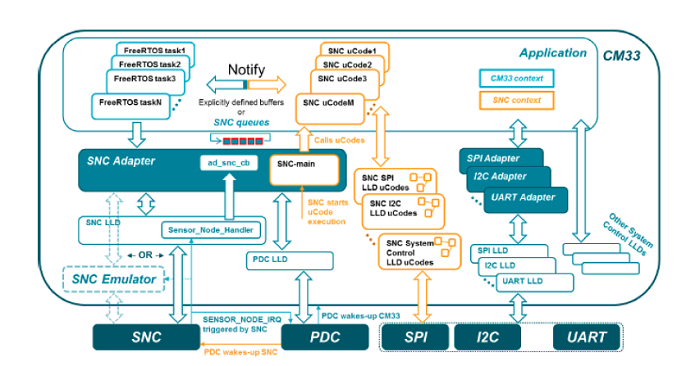By Marios Iliopoulos, applications director, Connectivity/Automotive & Industrial Business Group, Dialog Semiconductor
Today’s portable devices rely on sensors and peripherals integrated into their hardware for continuously monitoring their surrounding environments. Being able to generate and process that level of contextual awareness data is key to how these devices continue to become smarter and more sophisticated in leveraging that data for user applications. The sensors effectively serve as the brain of the smart device.
But incorporating more sensors and peripherals, and generating the data that comes with that, also requires integrating more powerful CPUs capable of making the computations needed to keep up. This introduces another wrinkle: Packing more sensors and CPUs into the hardware increases the size of the design, the cost of manufacturing it, and the rate of power consumption needed to keep pace with an evolving set of feature requirements. How do you reduce the power, size, and expense demands being made on the hardware without also sacrificing the sensors’ core functionalities?
For engineers, the goal needs to lie in building advanced microcontroller (MCU)-based architectures wherein the amount of time that the MCU has to stay awake can be reduced as much as possible. Doing this requires offloading time- and power-consuming data transfers between the sensors and the memory from the MCU.
That’s where sensor hubs come into play. These small CPU cores interface with sensors to offload those resource-heavy demands being put on a system-on-chip’s (SoC’s) main processor, performing operations in the background and “waking” the main processor only when it’s needed. In this way, sensor hubs — or sensor node controllers (SNCs) — deliver on the “always on” requirement for sensor and peripheral access while, at the same time, tamping down power consumption rates and design costs.
Minimizing energy consumption in systems with multiple sensors
Extending the lifespan of systems with multiple sensors relies on a combination of optimizing power usage while simultaneously minimizing the amount of “awake” time for the hardware’s main processor. An integrated, dedicated hardware state machine can assume repetitive tasks typically assigned to the processor — like sensor polling and reading — to serve that low-power, sensor hub function.
Because the SNC is capable of waking up quickly and using fewer blocks to transmit data from the sensors and peripherals to the memory, and vice versa, it’s able to take over these functions on its own while the main processor continues to sleep. Sensor hubs are also capable of performing simple data operations of their own, ensuring that the only time the main processor really needs to come alive is to perform any complex data crunching that may be needed.

Allowing the main CPU to sleep for longer periods of time, rather than leaning on it for every single task, goes a long way toward power-consumption savings. That’s certainly the main advantage of an SoC architecture that utilizes dedicated hardware for performing sensor and peripheral data manipulation. This approach, though, does carry a notable drawback: the complexity of the programming. SNCs are programmed in assembly and are consequently very difficult to debug. As a result, easily programming, debugging, and making full use of the SNC’s underlying capabilities — in a way similar to MCUs — stand as the biggest challenges facing sensor hubs.
Pairing SNCs with a framework that can streamline programming complexity
Reducing programming complexity requires integrating a complete, easy-to-use programming framework with the SNC.
That framework needs to simplify microcode development within the SNC. Defining and incorporating one of the C programming languages is a must so that the sensor hub can support C-like programming alongside assembly. This hybrid programming code model then encompasses code development across both the SNC and the main processor, providing a complete, easy-to-use set of API procedures and C-like functions that make programming and debugging far more developer-friendly.
The future of smart devices runs through SNCs
At the end of the day, the sensor hub architecture succeeds in minimizing power consumption for portable systems that integrate multiple sensors and peripherals. Its dedicated, sophisticated hardware state machine offloads repetitive tasks previously forced onto a constantly awake, power-hungry main application processor. And when paired with a developer-friendly programming framework, it streamlines inherent programming complexity for more intuitive uses.
When it comes to powering the future of smart devices and connected sensors — and doing so in a way that optimizes power usage, design size, and production costs all at once — sensor node controllers are paving the way forward for developers and manufacturers.
Advertisement
Learn more about Electronic Products Magazine





